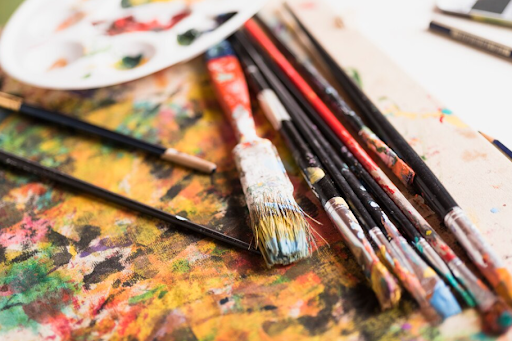Fine art is a broad and intricate field that encompasses a variety of techniques, mediums, and styles, each contributing to the richness of artistic expression. From classical paintings to contemporary digital creations, fine art continues to evolve, reflecting cultural, social, and technological changes. This article delves into the diverse world of fine art, exploring its key techniques, mediums, and styles.
Techniques in Fine Art
1. Drawing
Drawing is often considered the foundation of fine art. It involves creating images on a surface, typically paper, using tools like pencils, charcoal, ink, or pastels. This technique is valued for its immediacy and ability to capture fine details and expressive lines. Artists use drawing not only as a standalone art form but also as a preliminary step for paintings and sculptures.
2. Painting
Painting is a versatile and widely practiced technique in fine art. It involves applying pigment to a surface, usually canvas, paper, or wood. The choice of medium—oil, acrylic, watercolor, or gouache—affects the texture, drying time, and overall appearance of the work. Painting allows for a wide range of styles, from realistic portraits to abstract compositions.
3. Sculpture
Sculpture is the art of creating three-dimensional forms. It can be executed in various materials, including clay, stone, metal, and wood. Sculptors use techniques like carving, modeling, casting, and assembling to create their works. Sculpture adds a tangible, physical dimension to fine art, inviting viewers to experience art from multiple angles.
4. Printmaking
Printmaking encompasses techniques like etching, lithography, screen printing, and woodcut. Artists create images on a matrix, such as a metal plate or a wooden block, and then transfer them onto paper or fabric. Printmaking allows for the production of multiple originals, making fine art more accessible to a broader audience.
5. Photography
Photography, once seen primarily as a documentary tool, has firmly established itself as a fine art technique. Fine art photographers use cameras to capture and manipulate images, often focusing on composition, lighting, and conceptual themes. The advent of digital technology has expanded the possibilities for photographic manipulation and presentation.
Mediums in Fine Art
1. Oil Paint
Oil paint, made from pigments suspended in oil, is known for its richness and durability. It allows artists to create intricate details and smooth transitions of color. The slow drying time of oil paint provides the flexibility to make changes and add layers over an extended period.
2. Acrylic Paint
Acrylic paint, made from pigments suspended in acrylic polymer emulsion, dries quickly and is water-resistant when dry. It can mimic the properties of both oil and watercolor paints, making it a versatile choice for fine artists. Acrylics are also favored for their durability and vibrant colors.
3. Watercolor
Watercolor, made from pigments mixed with water, is known for its transparency and luminosity. This medium is often used for delicate and spontaneous works, as it allows for fluid and expressive brushstrokes. Watercolor is favored for landscape paintings and botanical illustrations.
4. Pastel
Pastels are sticks of pigment mixed with a binder. They come in soft, hard, and oil varieties. Soft pastels are known for their intense color and ease of blending, while hard pastels are used for fine details. Oil pastels have a creamy texture and are used for vibrant, painterly effects.
5. Digital Media
Digital media is a relatively new addition to the world of fine art. Artists use software and digital tools to create artworks that can be printed, displayed on screens, or interacted with. Digital art encompasses a wide range of styles, from photorealistic renderings to abstract and experimental works.
Styles in Fine Art
1. Realism
Realism focuses on depicting subjects as they appear in everyday life, with an emphasis on accuracy and detail. This style aims to represent the visual reality of the world, often highlighting ordinary scenes and people. Realism has been a dominant style in fine art since the 19th century.
2. Impressionism
Impressionism emerged in the late 19th century as a reaction against traditional academic painting. Impressionist artists, such as Claude Monet and Pierre-Auguste Renoir, sought to capture the fleeting effects of light and color. They used loose brushwork and vibrant colors to create a sense of movement and spontaneity.
3. Abstract Art
Abstract art, which became prominent in the early 20th century, moves away from depicting recognizable subjects. Instead, it focuses on shapes, colors, and forms to convey emotions and ideas. Artists like Wassily Kandinsky and Piet Mondrian were pioneers of this style, which continues to evolve in contemporary fine art.
4. Surrealism
Surrealism, which emerged in the 1920s, explores the subconscious mind and dreams. Surrealist artists like Salvador Dalí and René Magritte created bizarre and fantastical scenes, often with a dreamlike quality. This style aims to challenge conventional perceptions of reality.
5. Contemporary Art
Contemporary art encompasses a wide range of styles and mediums, reflecting the diverse and global nature of today’s art world. It includes everything from conceptual installations and performance art to digital creations and street art. Contemporary artists often engage with social, political, and environmental issues, pushing the boundaries of what fine art can be.
Conclusion
The world of fine art is vast and ever-changing, encompassing a myriad of techniques, mediums, and styles. From the precision of drawing to the fluidity of painting, from traditional oil on canvas to cutting-edge digital media, fine art offers endless possibilities for creative expression. Whether rooted in realism or exploring the abstract, fine art continues to captivate and inspire, reflecting the complexities and beauty of the human experience.


